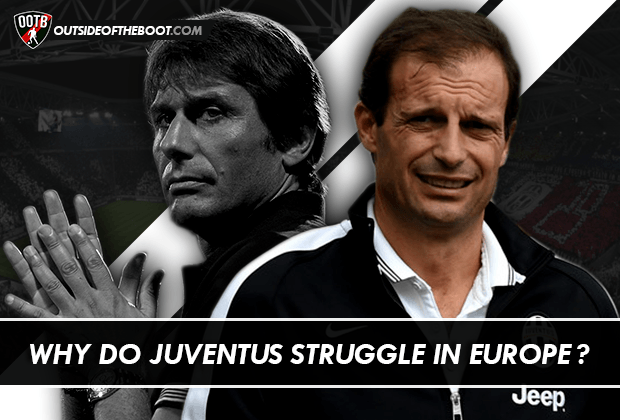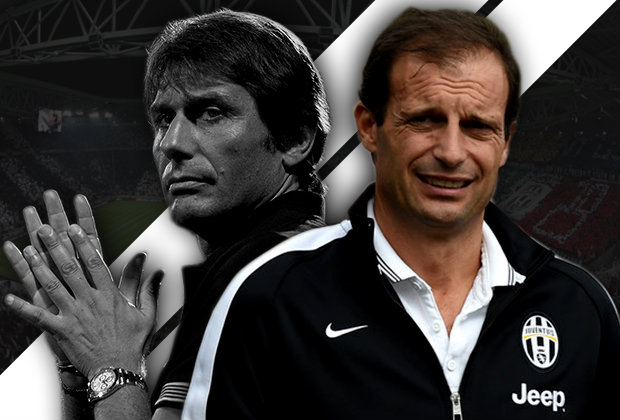The reigning Italian champions have won the Serie A a record 30 times. Despite massive success in Italy, the club has failed to translate their domestic performances to the European scale, winning the Champions League twice in their history. Joseph Solomon analyses why the recent Juventus falters when it comes to the European stage.
Juventus, a name associated with a special brand of football in Italy, a name which had the pedigree to drive fear into the hearts of opposing teams, a club which had legends like Michel Platini, Zidane, Alessandro del Piero and Gigi Buffon, a Club which has won the Scudetto – a staggering 30 times. Juventus are the Manchester United of Italy. Etched in folklore ranging back to the times of John Carles and Giampiero Boniperti, La Signora Omicidi, have always enjoyed success in the Italian peninsula.
Surprisingly, Juventus in Italia and Juventus in Europe are two contrasting sides of a coin. While one is robust and dynamic, the other is lethargic and weak.

Winning Champions League twice while finishing runners-up a mammoth 5 times, the coveted European Trophy has always eluded the Old Lady, since times unknown. The 1984-85 European win was inked with the blood of 39 Tifosi, and has always been treated as a win, ‘that was not deserved‘, due to the Heysel disaster. The 1995-96 win, also did no justice to the brand that Juventus flaunted and defeat to Borussia Dortmund the very next season, was its evidence.
However, in recent times, the brand Juventus, in Europe, has been constantly associated with ‘mediocrity’ and ‘another stepping stone‘. Leaving the Juventus in Italia aside, we zoom in on the working of Juventus in Europe and what went wrong for La Vecchia Signora.
The three men defense has its positive and negatives, it has its ups and its downs, for Juventus the three men defense in Italia has proven to be Scudetto worthy, while in Europe it has victimized the Old Lady. The defensive trio of Andrea Barzagli, Leonardo Bonucci and Giorgio Cheiliini has worked wonders in Italy but has disappointed and failed in Europe.
The Working of ‘BBC’ is quite simple – while Barzagli and Cheillini drop wide, Bonucci forms a pairing with Andrea Pirlo, who drops deep to govern play and this constitutes a basic back four with Barzagli as right back, Cheillini as left back and Bonucci and Pirlo in the heart of defense. Theoretically this should work, as Pirlo’s brilliance is unparalleled plus the covering provided to the heart of defense in the form of Vidal and Marchisio/ Pogba, should be more than enough. In practice, this fails immediately. Firstly Barzagli and Cheillini are not out and out Wing-backs, secondly the heart of defense lacks pace tremendously. This give full advantage to the opposing European teams – who flaunt pacey wingers and forwards enabling them to take advantage of the ‘lack of speed’ and tactical deformity. Moreover space vacated by either Barzagli or Cheillini is often capitalized on by the opposing teams. When Juventus loose the ball, the opposing teams can and have easily exploited vacated spaces with swiftness and agility.
Now moving on to the ‘goal scoring‘ department, and similarly like the defense, Juventus’s attack also lacks pace. Carlos Tevez – is perhaps the only hardworking player in the attack department whose work-rate is still commendable. The old theory of ‘launching a long ball for an imposing Striker – who knocks down for the second striker to capitalize on’ has been and is still followed (sometimes) at Juventus. This particular technique is perhaps the team’s biggest downfall. With Fernando Llorente often delivering patchy performances, the team suffers. Sebastian Giovinco – who is perhaps the most ‘speedy‘ player in the whole Juventus squad has succumbed to this playing technique, as the ‘small’ Italian often operates between the space and is known for his ability to take on players and beat them, at will.
In a very ‘Stokish’ style approach in the final third – Juventus has often lacked luster. Another major worry is set pieces. Even after flaunting imposing figures like Cheillini, Barzagli and Llorente, Juventus still defend set pieces horribly. Although zonal marking has not been used in set pieces, man to man marking seems to succumb when Juventus defend their goal. Failing to clear their lines, have often resulted in goals by other European teams.
Ironically, the team which features or perhaps flaunts Arturo Vidal, has failed to dominate midfield against ‘low tier’ teams of Europe. Lack of pace fused with old style thinking and the inability to move the ball quickly has taken a major toll on Juventus and perhaps are they premier harbinger of their ‘stocky’ performances in Europe.
After Antonio Conte’s departure came in a fresh air of Massimilliano Allegri. The former AC Milan boss was given his fair share of stick (playing Andrea Pirlo out of position in AC Milan plus the added hate of hiring a sacked manager of a rival) in his early days. Months into Allegri’s first campaign, and the Italian is surprisingly doing well, in Europe and Italy. Conte’s departure might be a blessing in disguise for La Signora Vecchia as Conte’s main focus was Italy – but Allegri’s focus is Europe. The latter has immediately shifted things at Juventus and has immediately rectified the leaky Juventus defense in Europe. The signing of Patrice Evra has enabled Juventus to deploy a back four in Europe and it has reaped its profits. Juventus look more agile, comfortable and solid at the back.
Although, Allegri might not win his first European Cup in his first season at Juventus, the shift of stratagem and the shift of tactics will undoubtedly benefit the bianconneri in the long run and who knows – a Champions League win within five years might be a dream come true for every Tifosi.
Written by Joseph Solomon
- Hellas Verona: The Brigate Gialloblu - February 3, 2015
- Watercarrier: An Evolved Position - January 28, 2015
- Can a three man defence work in the Premier League? - January 27, 2015

























































